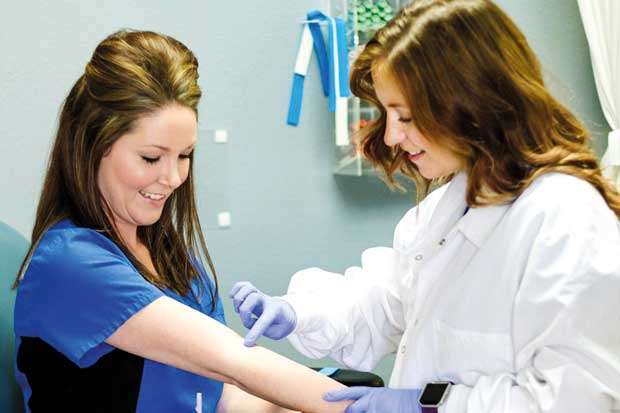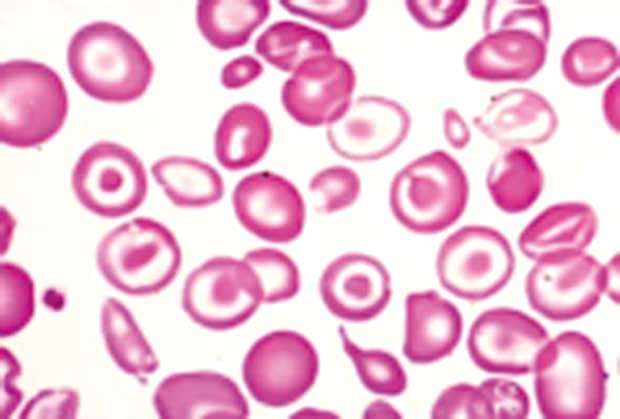05 Oct 2018 - {{hitsCtrl.values.hits}}

 Many decades ago, only a handful of laboratory investigations were available to diagnose diseases or to support the diagnosis of even critical diseases. Even those few tests had many limitations due to inaccuracies, human errors and limited research. Fortunately, we live in the 21st Century where the world is flooded with medical laboratory tests which can interpret the body’s illnesses with much higher accuracy and precision.
Many decades ago, only a handful of laboratory investigations were available to diagnose diseases or to support the diagnosis of even critical diseases. Even those few tests had many limitations due to inaccuracies, human errors and limited research. Fortunately, we live in the 21st Century where the world is flooded with medical laboratory tests which can interpret the body’s illnesses with much higher accuracy and precision.
Therefore it is important for us to have a basic idea about the common laboratory tests that are commonly done in the healthcare setting.
In this week’s Health Capsule we have consulted Dr K.A.C. Wickramaratne, Senior Lecturer in Pathology, Faculty of Medicine, Karapitiya, to educate you about another common haematological test requested by clinicians; the blood picture. Blood smear, peripheral blood picture, blood film and peripheral smear are some other names used for this investigation.
What is a BP?
We now know that a Full Blood Count (FBC) gives an idea about quantities of different cells in the blood.
The blood picture examination on the other hand, is a direct observation of blood cells in a stained blood smear using a microscope to assess changes in shape, size (quality) and quantity of blood cells. To put simply, Blood Picture is a ‘snapshot’ of blood cells that are changed due to an illness. Various details about the type and severity of the illness could be obtained through this snapshot.
The cells in blood include red blood cells (erythrocytes), white blood cells (leucocytes) and platelets (thrombocytes). Red cells, whose main function is transporting oxygen to the cells, are tiny bags filled with haemoglobin. When looked under a microscope, they resemble ‘ulunduwadai’ or doughnuts, with a flat centre and an inflated outer rim.
White blood cells are a group of different cells including neutrophils, lymphocytes, monocytes, eosinophils and basophils. Each white cell type has its normal unique quantity, shape, size, colour and are useful in fighting infections. Platelets are tiny particles in the blood that are required for blood “clotting,” Dr. Wickramaratne said.
In different disease conditions these cells can have abnormal shapes, shades or appearances which can be precisely observed by microscopic examination by a haematologist.
When the doctor requests for a BP
Your doctor may request a Blood Picture on many occasions ranging from fever to anaemia and in case of prolonged vague symptoms like joint pain. It can be ordered simply to differentiate viral fever from bacterial fever, but Blood Picture will help diagnose serious illnesses like blood cancer too.
In case of Anaemia (deficiency of haemoglobin, the blood pigment in blood), Blood Picture is important in determining underlying cause for anaemia.
If the patient is having unexplained fever, vague ill health, bone pain, non-specific symptoms, loss of weight, loss of appetite etc, BP examination may play a pivotal role in diagnosing a possible serious underlying disease condition like leukemia or lymphoma.
No precautions nor preparations
No preparation or precautions are needed. You can give the blood sample at any time. Blood should be collected from a peripheral vein by a neat venipuncture. (or by a finger prick or heel prick).
The sample needed for BP preparation
The sample needed for a BP is same as for Full Blood Count. The correct volume of venous blood in a special tube with a chemical called EDTA is suitable for BP. Or else, a finger can be directly pricked (with a device called lancet) and blood coming through the prick can be directly used to prepare BP. In babies heel prick can be used to collect a blood drop on to a slide for BP preparation.

The information that can be gathered in a BP
The slide containing the smeared blood is further prepared and observed under the microscope by a haematologist, who interprets the findings, taking the patient’s clinical signs and symptoms into consideration.
Similar to FBC, we can gather much information related to disease from BP. Findings in the blood picture can be matched with FBC results. Therefore, laboratories prepare blood pictures when FBC results are abnormal to verify those.
In anaemia, if the red cells are smaller and have various shapes and sizes, it is most likely to be due to a deficiency of iron. Larger red cells could indicate vitamin B 12 deficiency. Diagnosis of malaria, different types of haemolytic anaemia (anaemia due to destroying of red cells) like thalassaemia and sickle cell disease can be made by the blood picture examination.
White blood cell morphology is very useful in diagnosing viral infections, bacterial infections, leukemia and lymphoma etc.
Platelet number and its appearance in the BP can be assessed to diagnose some disorders of platelets.
Changes can be seen in all three types of cells in certain disease conditions.
Interestingly, even though a sample of blood is checked, changes in BP reflects diseases not only in blood, but also diseases in many other organs such as liver, kidney, bowels, lymph nodes and bone marrow as well.
Interpreting a BP
A report has a description of each cell subtype; red cells, white cells and platelets. At the end of the BP report, there is a comment, conclusion or suggestion. This is the final interpretation of findings in the smear and related clinical features.
The changes in blood cells can be age related and also vary due to some physiological conditions such as pregnancy. Therefore, correct age, sex and the physiological status etc. are very important to be mentioned in the request for the haematologist to interpret while reporting the BP.
How quality of a sample can be affected
If the sample is directly collected at a centre within a hospital, there is minimal cause for concern since the test would be performed in a short period of time and reported.
However, if the centre that collected your blood sample does not have laboratory facilities or a haematologist, try to find out where the test is done, if a qualified haematologist is available and how the samples are transported to the laboratory. All these factors can affect the quality of your report and as a result, further management of your disease condition.
Repeating BP
There are various tests like fasting blood sugar, which are repeated periodically. However, unless the treating physician decides, BP is usually not repeated.
Blood Picture report is a very valuable tool in diagnosis and management of patients with diverse disease conditions. Make sure you supply correct information about your condition to your doctor to get maximum information about your illness in the Blood Picture report.
22 Dec 2024 3 hours ago
22 Dec 2024 3 hours ago
22 Dec 2024 5 hours ago
22 Dec 2024 6 hours ago
22 Dec 2024 6 hours ago